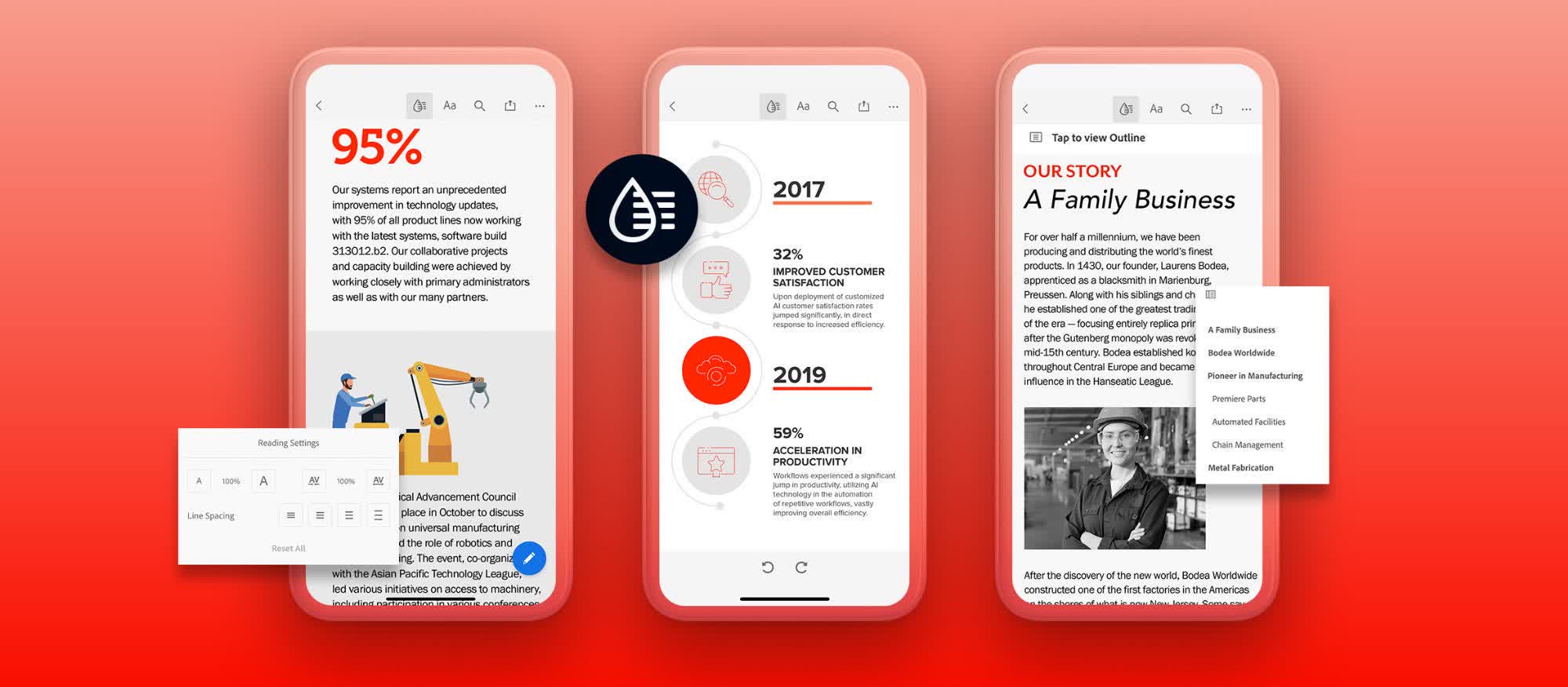In brief: Adobe is bringing the same responsive layout experience that governs many of today's websites to PDFs. And while it's not perfect, it represents a step in the right direction in a world that's dominated by mobile devices.
Adobe today announced an update for Acrobat Reader that's supposed to solve the perennial problem of PDFs in a mobile-first world – the poor reading experience on devices with smaller screens.
The new feature is called "Liquid Mode," and it leverages the same Sensei artificial intelligence the company is using to build tools that can clean up audio recordings and detect whether a photo has been altered using specialized software.
Liquid Mode can be activated with the tap of a button in the newest version of the mobile Acrobat Reader app. It works by using a machine learning task in the background that analyzes the layout of the PDF file you've opened and determines how to reformat text, graphics, and tables for better viewing on a smartphone screen without the usual panning and zooming. It will also create collapsible sections and adjust spacing between lines, words, and characters according to your preferences.

Adobe decided to build the overdue functionality after conducting extensive research on user experience. The company found that 65 percent of people in the US find PDF reading on mobile a frustrating experience, and 45 percent didn't even bother to go beyond the first few pages. With an estimated 2.5 trillion PDF files in circulation – most of which have complex layouts that require a big screen – Liquid Mode seemed like a no-brainer.
In our own testing, we found that the feature isn't perfect, but it can produce a decent layout for native PDFs, save for the occasional table or graph that's stored as an image. It's worth noting Liquid Mode won't work on scanned PDF files, and it doesn't yet recognize forms or slideshows.
In its current incarnation, Liquid Mode is limited to PDFs that are under 10 MB in size or 200 pages long. Adobe says you need an Internet connection for the feature to work, as it has to send files to its Document Cloud service to perform the AI magic, which requires a lot of computational power. Eventually, the company hopes to bring that functionality to smartphones by tapping into architectural advancements that offload machine learning tasks to a dedicated hardware block like the Neural Engine on Apple's A-series chipsets.
To get Liquid Mode, you have to use the Acrobat Reader app on iOS and Android, but the company says it will also bring it to the desktop in the near future. It's also working on a way to allow direct sharing of a PDF opened in Liquid mode for people who want to view them in their mobile browser of choice.